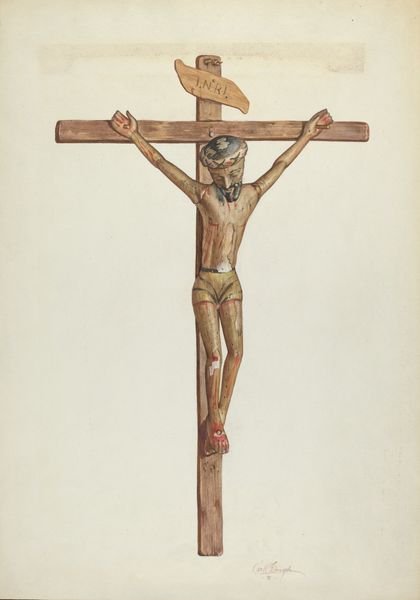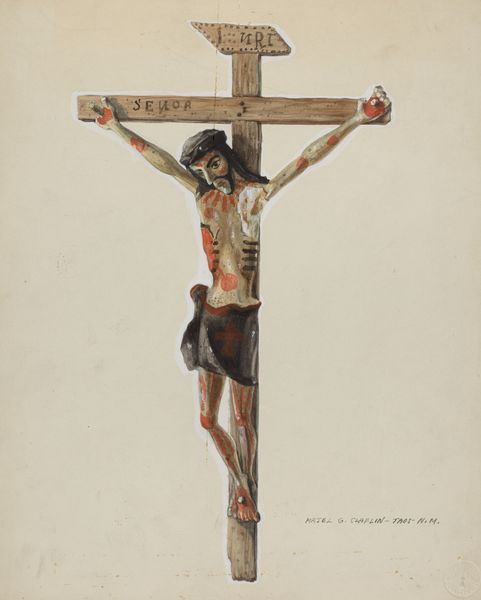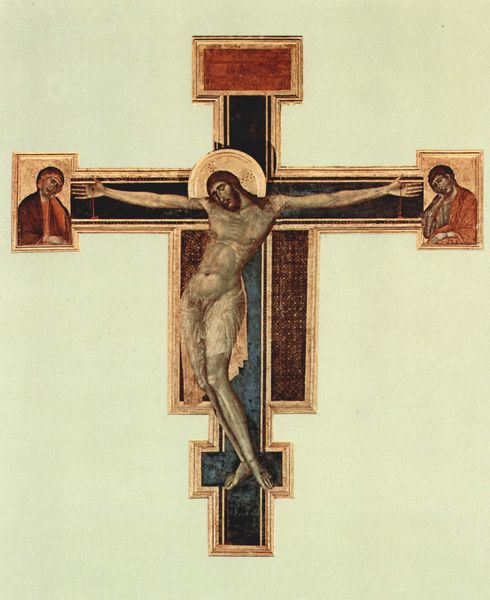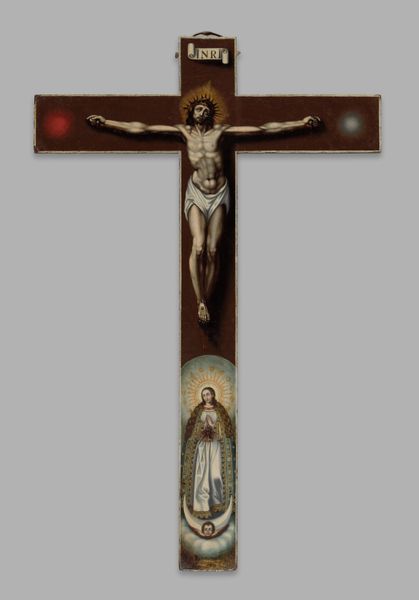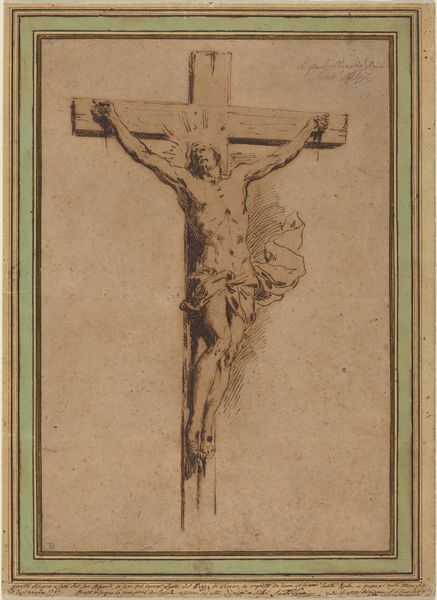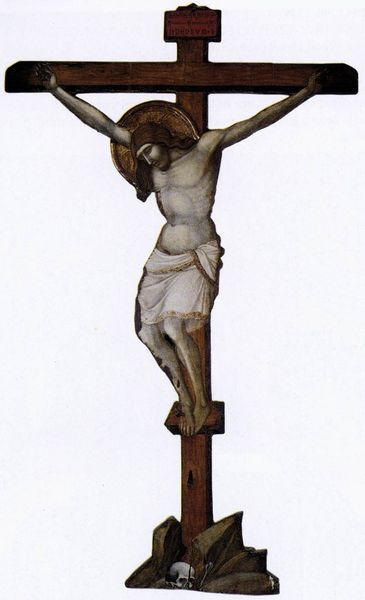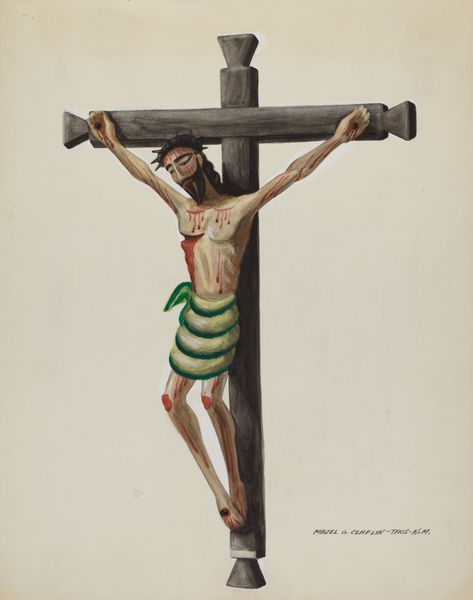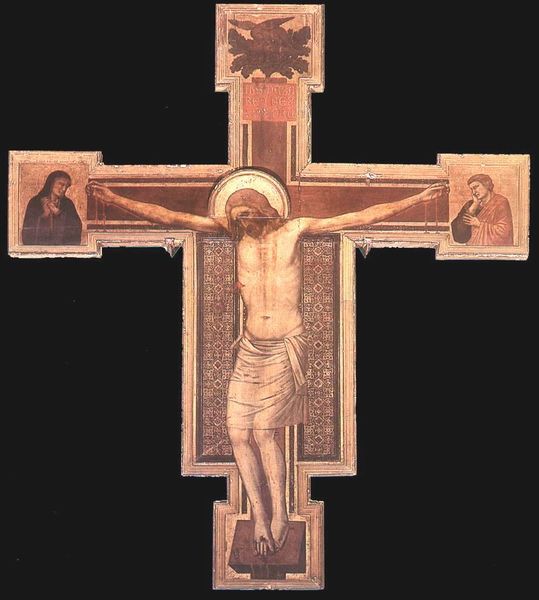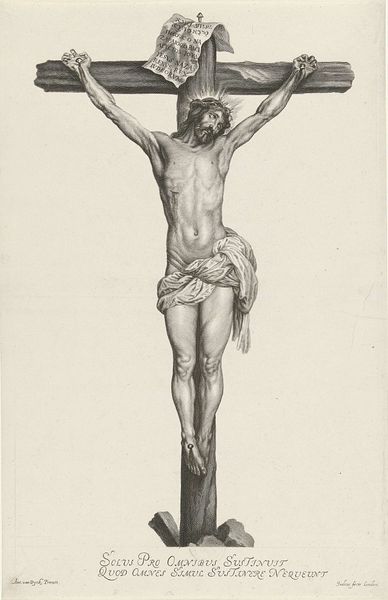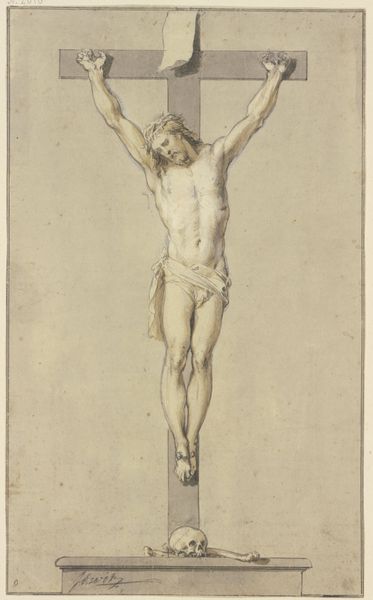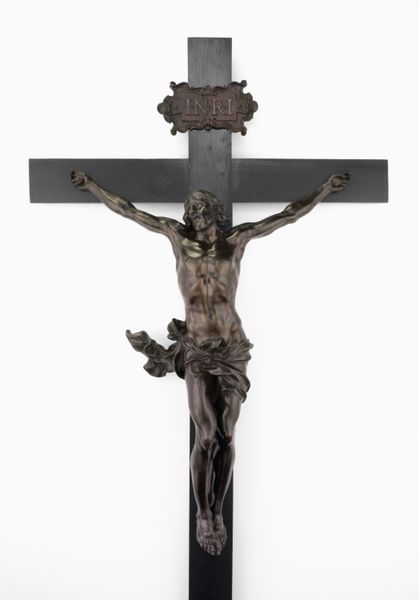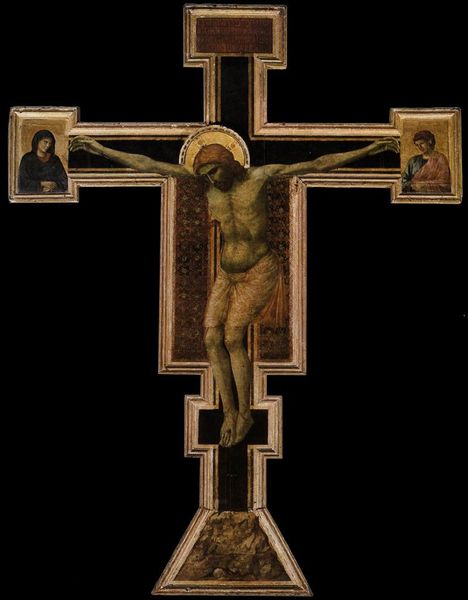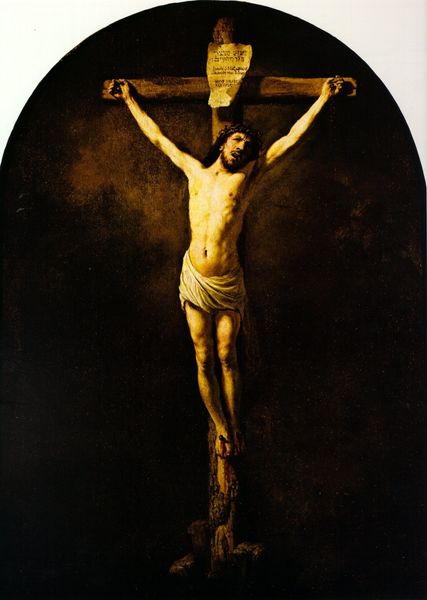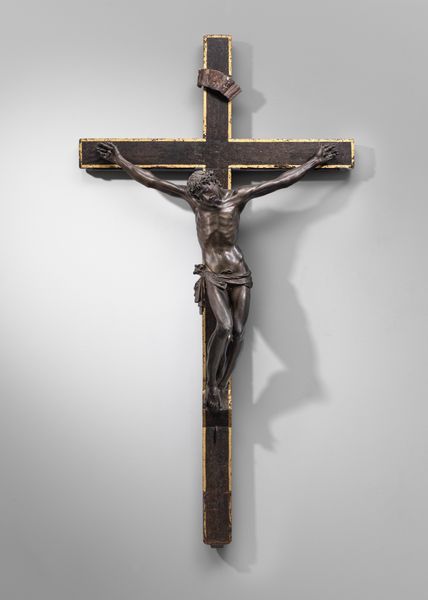
drawing, graphite
#
drawing
#
medieval
#
figuration
#
geometric
#
graphite
#
graphite
#
realism
Dimensions: overall: 45.8 x 35.4 cm (18 1/16 x 13 15/16 in.) Original IAD Object: 18 1/2"long; 14"wide
Copyright: National Gallery of Art: CC0 1.0
Curator: This graphite drawing, "Crucifix," was completed around 1939 by Pearl Davis. Editor: The drawing immediately strikes me as a rather stark depiction. The muted tones and the realistic rendering of the figure create a somber mood. Curator: It is intriguing how Davis utilizes a very accessible medium – graphite on what looks like ordinary paper – to explore a profound religious subject matter. We might consider the societal context of the late 1930s, a period marked by economic hardship and the looming shadow of war. Perhaps the artist saw parallels between Christ's suffering and the trials faced by ordinary people. Editor: Perhaps, but the formal composition also suggests a deeper meaning. The rigid geometry of the cross contrasts sharply with the organic, flowing lines of Christ's body. This interplay of shapes and forms creates a visual tension. Also note the level of anatomical detail against the grain of the cross. Curator: I am compelled to investigate the labor involved in such detailed drawing in 1939. Access to high-quality materials would be very limited. How might the Great Depression influence Davis’ choice to create a representation of an elaborate sculpture by hand versus carving something on her own? The social ramifications resonate with a desire to connect to larger conversations, perhaps her local parish? Editor: Let us look more closely at the inscribed lettering at the top. "INRI". Its inclusion makes it clear. This simple textual element amplifies the intended message by rooting it within a well-defined art historical lineage. What do you make of the overall symmetry? It is hard to dismiss, even if we factor in limitations of available materials or the circumstances of its creation. Curator: Thinking about the artist’s access to art historical precedent, particularly art from the medieval period is relevant. Did she try to mimic the look? Did she know it intimately? The work raises questions about artistic labor and resourcefulness in a specific historical context. Editor: I can agree on that point. Focusing on materials brings fresh consideration to the final affect. However, by highlighting certain intrinsic visual components, the historical setting fades while its enduring and transcendent themes become heightened.
Comments
No comments
Be the first to comment and join the conversation on the ultimate creative platform.
